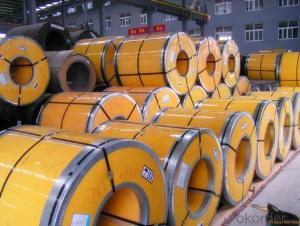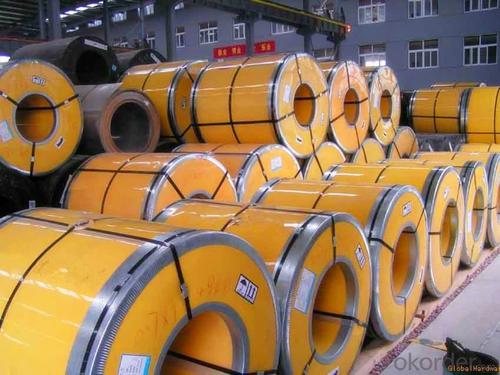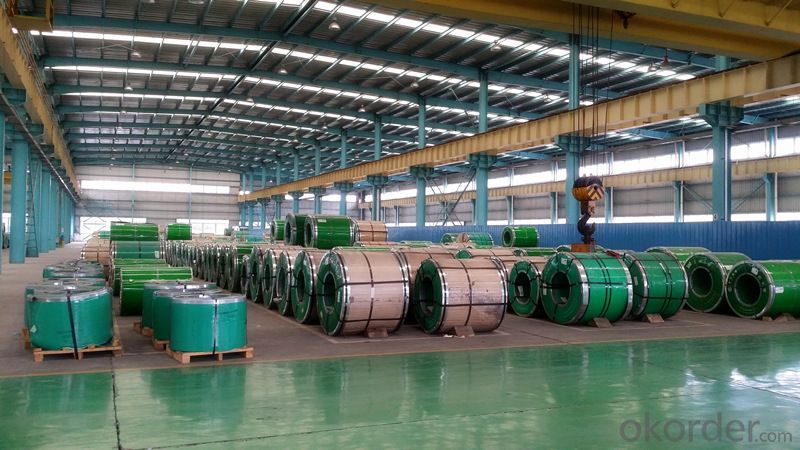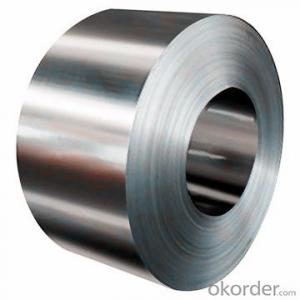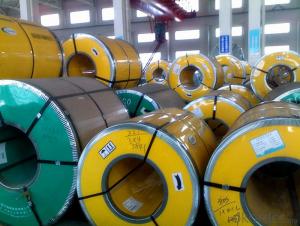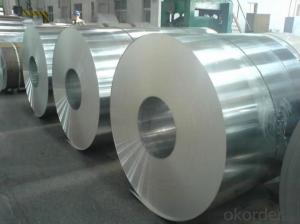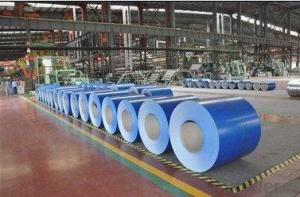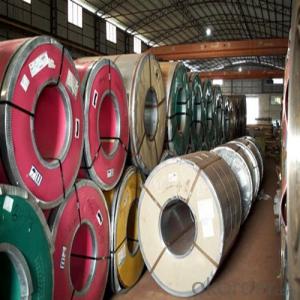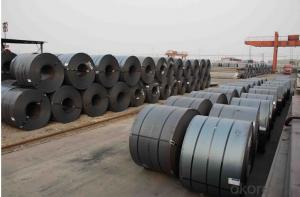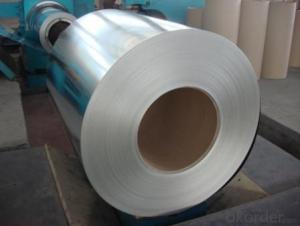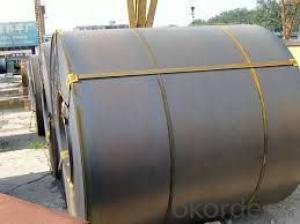Hot Rolled / Cold Rolled Stainless Steel Coil
- Loading Port:
- China Main Port
- Payment Terms:
- TT OR LC
- Min Order Qty:
- -
- Supply Capability:
- 5000 m.t./month
OKorder Service Pledge
OKorder Financial Service
You Might Also Like
Hot / Cold Rolled Stainless Steel Coil
1. | Item | STAINLESS STEEL COIL | ||
2. | Standard | ASTM,AISI,GB,JIS,SUS,EN,DIN,etc. | ||
3. |
Material | 200 series | 300 series | 400 series |
201,202 | 300,301,304,304L,309S,310S,316Ti,316L, 317L,321,329,329LA,329LD | 409,410,430,430LX,600,601 | ||
4. |
Specification | Thickness | 0.1mm-200mm | |
Width | 1000mm-3000mm | |||
Length | 1m-12m | |||
5. | Surface | No.1,No.4,No.5,BA,2B,hair line,embossed,mirror finish,etc | ||
6. | Application | Stainless steel coils s are widely used in: 1:Chemical industry equipment,industrial tanks 2:Medical instruments,tableware,kitchen utensil,kitchen ware. 3:Architectural purpose,milk or food processing facilities. 4:Hospital equipment,interior exterior decoration for building 5:Architectural purposes,escalators,kitchen ware,vehicles. Or they can be made as your requirement. | ||
7. | Package | Standard export package. | ||
8. | Export to | Asia,Africa,Europe,Middle East,South and North America,Oceania,etc | ||
9. | Contact | please feel free to contact CNBM | ||
- Q: How do stainless steel strips perform in cryogenic environments?
- The outstanding performance of stainless steel strips in cryogenic environments is well-known. Stainless steel strips possess exceptional resistance to extreme low temperatures, thanks to their unique composition and properties. In cryogenic temperatures, stainless steel strips exhibit remarkable strength, toughness, and corrosion resistance, rendering them highly suitable for a wide range of applications. Even under extremely cold conditions, stainless steel maintains its mechanical properties without becoming brittle or cracking, ensuring the structural integrity of the material. The corrosion resistance of stainless steel is particularly advantageous in cryogenic environments, where moisture and other corrosive elements can be present. The formation of a passive oxide layer on the surface of stainless steel protects it from chemical reactions and oxidation, guaranteeing its durability and longevity in cryogenic applications. Moreover, stainless steel strips possess excellent thermal conductivity, facilitating efficient heat transfer in cryogenic systems. This is especially beneficial in applications like cryogenic storage tanks, where maintaining the temperature of stored materials is crucial. Overall, stainless steel strips exhibit exceptional performance in cryogenic environments, combining strength, toughness, corrosion resistance, and thermal conductivity. These properties make stainless steel the preferred choice in various industries, including aerospace, energy, medical, and research, where cryogenic conditions are prevalent.
- Q: Are stainless steel strips suitable for low-temperature applications?
- Yes, stainless steel strips are suitable for low-temperature applications. Stainless steel is known for its excellent resistance to corrosion, durability, and high strength. These properties make it a suitable material for various applications, including low-temperature environments. Stainless steel has a low thermal expansion coefficient, which means it can withstand extreme temperature changes without significant distortion or damage. It remains stable and retains its mechanical properties even at low temperatures. This makes stainless steel strips ideal for applications in cryogenic industries, refrigeration systems, and other low-temperature environments. Furthermore, stainless steel strips offer good resistance to thermal stress and excellent toughness, ensuring their reliability and performance even in harsh conditions. They can withstand low temperatures without becoming brittle or losing their strength. In addition to its mechanical properties, stainless steel also provides excellent corrosion resistance, which is crucial for low-temperature applications. It can resist the corrosive effects of chemicals, moisture, and other elements commonly found in low-temperature environments. This resistance helps prevent rust, corrosion, and degradation, ensuring long-term performance and reliability. Overall, stainless steel strips are a suitable choice for low-temperature applications due to their exceptional mechanical properties, corrosion resistance, and durability. They offer the necessary strength, stability, and reliability required in challenging and extreme cold environments.
- Q: What is the thermal conductivity of stainless steel strips?
- The thermal conductivity of stainless steel strips is typically around 16-24 W/m·K, depending on the specific grade and composition of the stainless steel.
- Q: Are stainless steel strips resistant to corrosion?
- Yes, stainless steel strips are highly resistant to corrosion due to the presence of chromium which forms a protective oxide layer on the surface, preventing the metal from rusting or corroding.
- Q: What are the different packaging options for stainless steel strips?
- There are several packaging options available for stainless steel strips, depending on the specific requirements and preferences of the customers. 1. Coil Packaging: Stainless steel strips can be packaged in coils, which are wound tightly and secured with straps or plastic wrap. Coils are an efficient packaging option as they allow for easy handling, transportation, and storage. They are suitable for large quantities of strips. 2. Wooden Crates: For added protection and durability, stainless steel strips can be packed in wooden crates. The strips are stacked neatly inside the crates and secured with straps or foam inserts to prevent any damage during shipping or storage. Wooden crates are commonly used for heavy-duty applications or when long-term storage is required. 3. Pallets: Stainless steel strips can also be packaged on pallets, where they are stacked and secured with bands or shrink wrap. This packaging option is convenient for easy handling using forklifts and ensures stability during transportation. Pallets are commonly used for smaller quantities of strips. 4. Bundles: Stainless steel strips can be bundled together using plastic or steel bands. This packaging option keeps the strips organized and secure, preventing any tangling or damage. Bundles are suitable for smaller quantities of strips and provide easy handling and storage. 5. Custom Packaging: Depending on the specific needs of the customer, stainless steel strips can be packaged in custom options. This may include adding protective covers, foam inserts, or custom labeling for easy identification. Custom packaging ensures that the strips are adequately protected and ready for use upon delivery. Overall, the packaging options for stainless steel strips vary based on factors such as quantity, transportation requirements, and desired level of protection. Manufacturers and suppliers work closely with customers to determine the most suitable packaging option to ensure the safe and efficient delivery of stainless steel strips.
- Q: Are stainless steel strips resistant to fire and high temperatures?
- Yes, stainless steel strips are highly resistant to fire and high temperatures. Stainless steel is a type of steel alloy that contains chromium, which forms a protective oxide layer on the surface of the metal. This oxide layer makes stainless steel highly resistant to corrosion, heat, and fire. Stainless steel can withstand high temperatures without losing its strength or becoming deformed, which makes it an ideal material for applications that involve exposure to fire or extreme heat. Additionally, stainless steel has a high melting point, typically around 1370-1400 degrees Celsius, which further contributes to its fire and heat resistance properties.
- Q: What are the common uses of stainless steel strips in the pulp and paper industry?
- Stainless steel strips in the pulp and paper industry are commonly used for various purposes such as manufacturing machinery, equipment, and components that come in contact with corrosive chemicals and high temperatures. They are also utilized in the production of screens, filters, and conveyors due to their durability, resistance to corrosion, and ability to withstand harsh operating conditions.
- Q: Can stainless steel strips be used in architectural railing systems?
- Yes, stainless steel strips can be used in architectural railing systems. Stainless steel is a popular material choice for architectural applications due to its durability, corrosion resistance, and aesthetic appeal. Stainless steel strips can be formed into various shapes and sizes to meet the design requirements of the railing system. Additionally, stainless steel is low maintenance and can withstand harsh environmental conditions, making it an ideal material for outdoor applications. Overall, stainless steel strips provide a strong and visually pleasing option for architectural railing systems.
- Q: Are stainless steel strips resistant to chlorine attack?
- Yes, stainless steel strips are generally resistant to chlorine attack.
- Q: Are stainless steel strips suitable for electrical applications?
- Yes, stainless steel strips are suitable for electrical applications. Stainless steel has excellent electrical conductivity and is resistant to corrosion, making it a reliable choice for various electrical components and systems.
Send your message to us
Hot Rolled / Cold Rolled Stainless Steel Coil
- Loading Port:
- China Main Port
- Payment Terms:
- TT OR LC
- Min Order Qty:
- -
- Supply Capability:
- 5000 m.t./month
OKorder Service Pledge
OKorder Financial Service
Similar products
Hot products
Hot Searches
Related keywords
